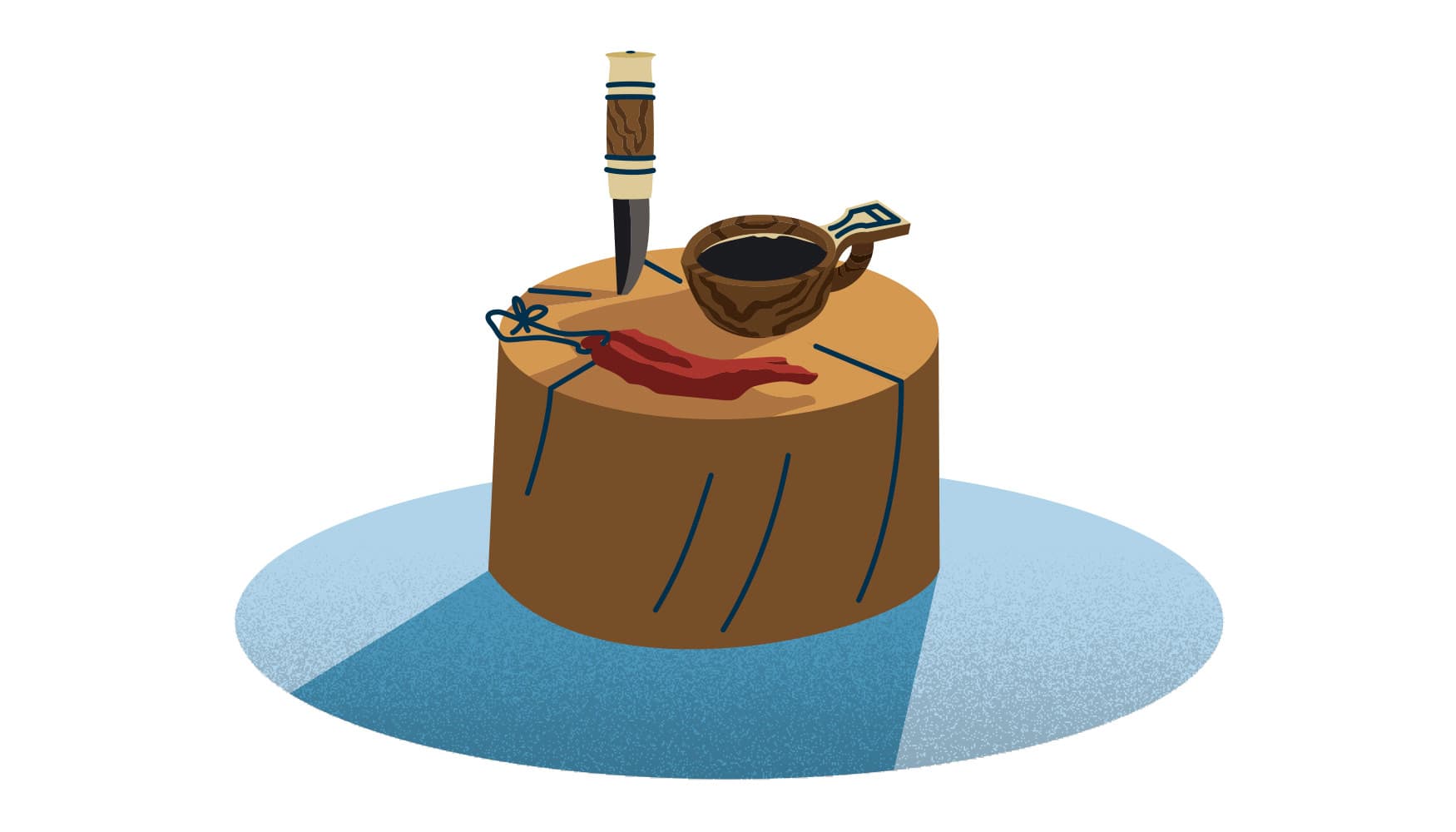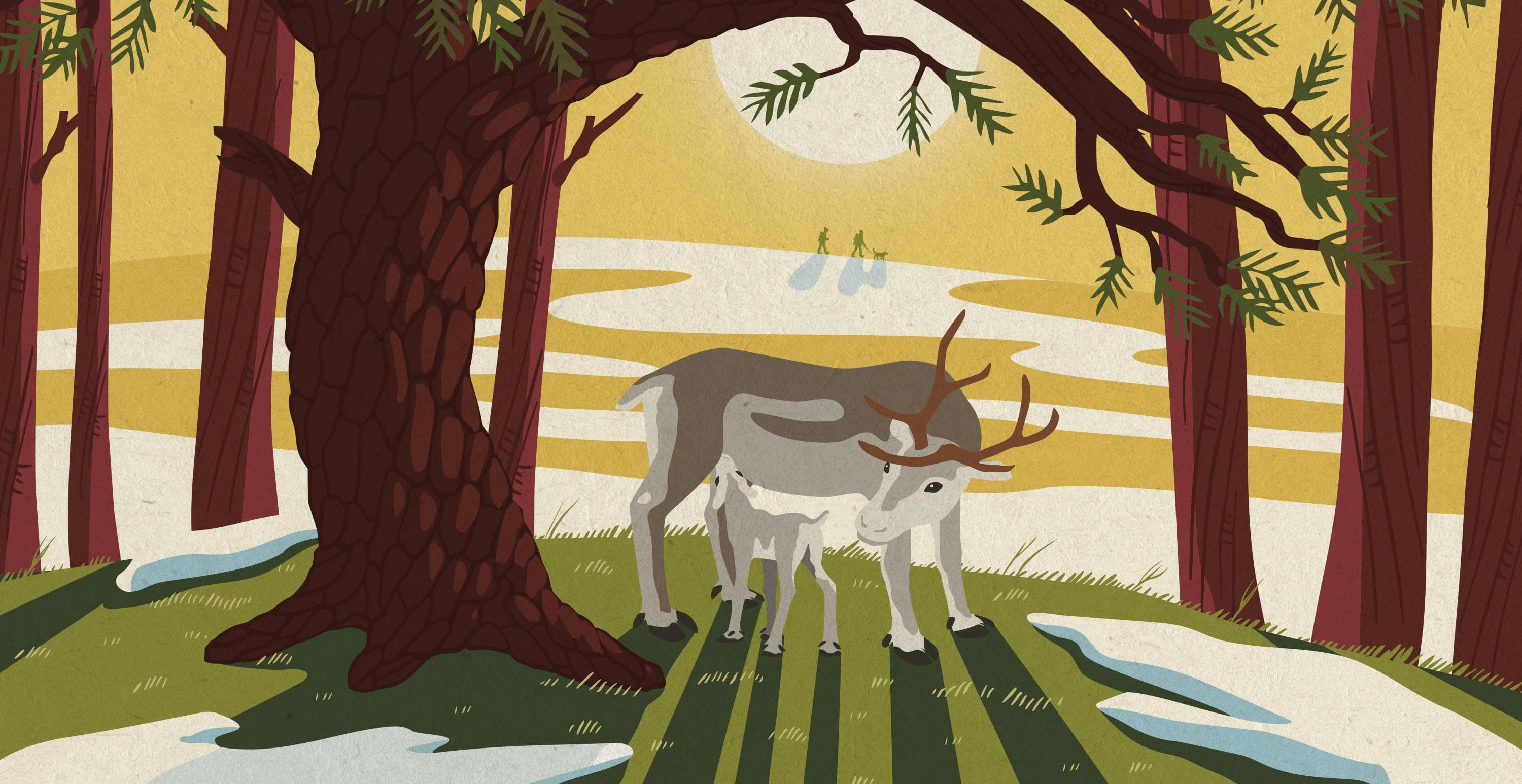The sustainable use of nature has been a prerequisite for the Sámi people and their traditional livelihoods. Nature and the land have always supported the Sámi. Fishing and hunting have traditionally not been carried out using methods and fishing periods that would have caused significant changes in fish or game stocks. The livelihoods related to land use form the material basis for the Sámi culture and identity and maintain the vitality of the Sámi Homeland, Sámi language, traditional knowledge, relationship with nature, communality of the Sámi culture and Sámi handicrafts.
The Sámi are the only indigenous people in the European Union area. The status of the Sámi as an indigenous people was confirmed in the Constitution of Finland in 1995. In the Sámi worldview, people, nature and language are not seen as separate. The traditional Sámi settlement areas in Finland, Norway, Sweden and Russia are called the Sámi Homeland.
A total of ten Sámi languages are known, nine of which are still spoken in the areas of Finland, Sweden, Norway and Russia. Three of them are spoken in Finland: Inari Sámi, Skolt Sámi and Northern Sámi.
Traditional Sámi livelihoods include reindeer husbandry, fishing, hunting, collection of natural products and Sámi handicrafts as well as their modern forms of practice. Traditional livelihoods are the foundation of the Sámi culture.
In Finland, legislation determines the Sámi Homeland, which is the area that includes the municipalities of Enontekiö, Inari and Utsjoki and the northern part of the municipality of Sodankylä in the Lapland reindeer herding co-operative. The management, use and protection of natural resources under the administration of Metsähallitus is harmonised with the Sámi Homeland in such a way that it ensures the conditions for preserving the Sámi culture.
You are warmly welcome to the Sámi Homeland. We would like to share with you some pointers on how you can be considerate of the things that are important to the Sámi people when enjoying nature.
Respect the Sámi Cultural Environment
Wilderness areas are not wild; they are a part the Sámi homeland, the everyday cultural environment of traditional livelihoods and Sámi communities.
The Sámi Cultural Environment Is Formed By Visible And Invisible Parts
- Built heritage, ancient remnants and traditional landscapes created by Sámi livelihoods are visible parts of it (siida.fi).
- Oral tradition gives the landscape meaning and is transferred through generations as stories, place names and traditional Sámi music: yoik, livđe and leudd songs.
- Yoik is music from the Northern Sámi, livđe from the Inari Sámi, and leudd from the Skolt Sámi. In finnish (oktavuohta.com).
Respect The Sámi Cultural Environment
- Take the sacred places of the Sámi into consideration and follow good practices.
- For example, you can visit Ukonsaari in Inari from the lake without disembarking onto the island and thus respect the sacred place.
- Do not damage the cultural environment and cultural heritage sites - you are allowed to look but please don’t touch.
- Do not treat the cultural environment like a guest book by writing on walls or the ground, and do not move or pile rocks.
- Leave rocks, structures and old trail markings in place.
Take Into Account The Privacy Of Homes And Local Special Rights
- The right to privacy applies to the home, yard and reindeer pasture in the yard. The right to privacy also protects reindeer and fishing huts, holiday cottages, lean-to shelters and campfire huts owned by private individuals and their yard areas, and their privacy must be respected.
- Locals may have special rights that may differ from your rights. Locals often have good reasons for more extensive rights regarding e.g. off-road traffic, fishing and hunting.
- Follow good practices when taking photos in a public place. Ask for permission to photograph people.
Do not alter the landscape through your actions or leave a trace of your visit!
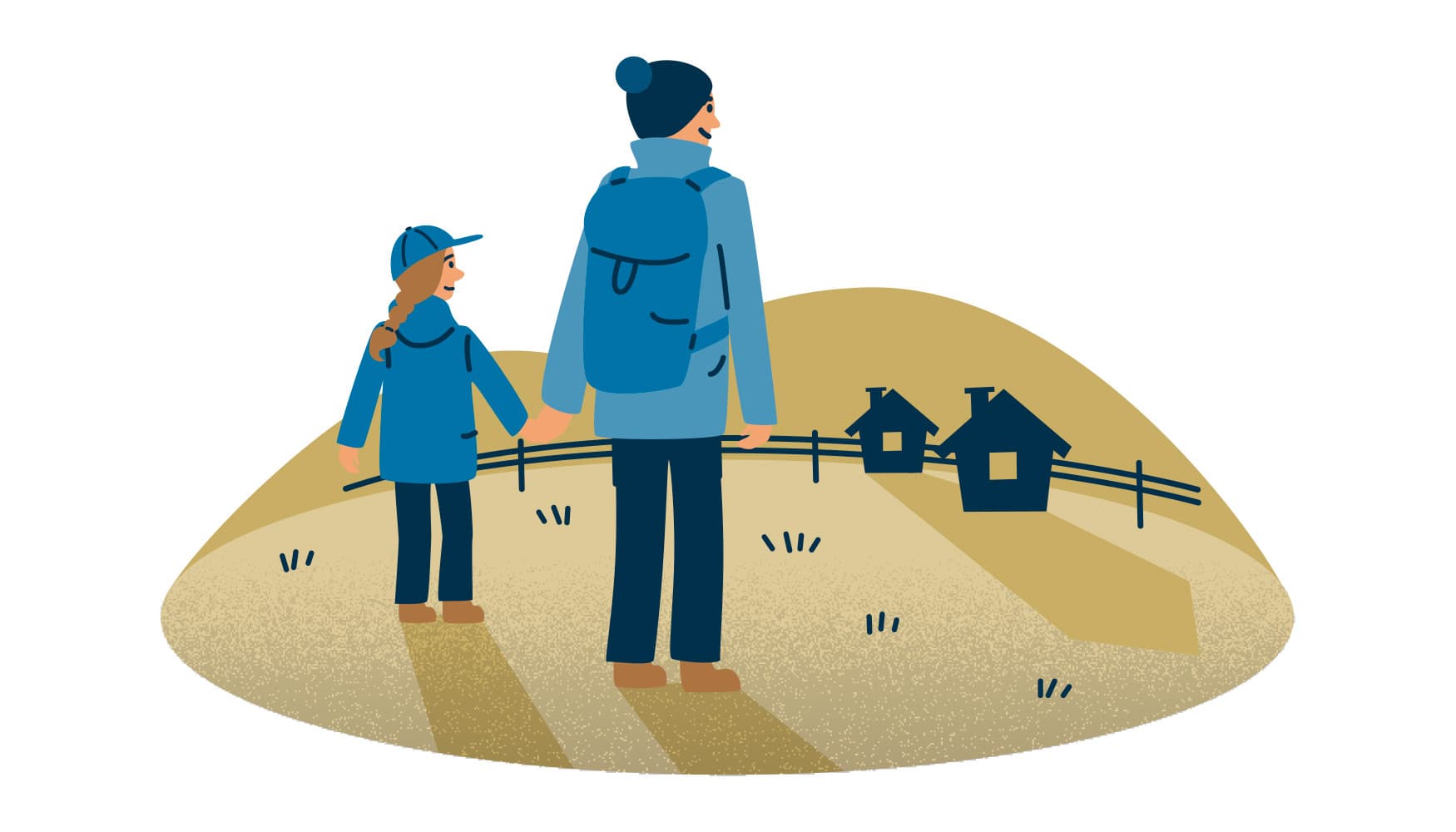
Cherish the Sensitive Arctic Nature
atch And Collect Natural Products, Such As Game, Fish And Berries And Other Natural Products Only As Much As You Need For Your Use
- Follow the Fishing and Hunting Acts, the related guidelines, catch quotas and good practices (eraluvat.fi).
- Respect local traditions, hunting culture, and prey (eraluvat.fi).
- Follow the disinfection instructions related to fishing to prevent the spread of the salmon parasite (ruokavirasto.fi).
Use Existing Paths And Trails
- By staying on the trails, you avoid unnecessarily disturbing animals, allow them sufficient distance to get away from you and safeguard nesting peace
- Don't trample plants.
- Do not make new paths or alter the Sámi cultural landscapes.
- Follow the conditions of off-road traffic permits and stay on the trail. (eraluvat.fi).
Let’s Keep The Northern Waters Clear
- Protect the waters in the Arctic wilderness from excessive disturbances, for example by avoiding swimming in small fell lakes.
- The cliffs are important water abstraction sites for people moving in nature.
- Do not wash dishes or yourself directly in or near the water system. Pour dishwashing water into the ground far enough away from the water system.
- Biohajoavatkin pesuaineet voivat ennen hajoamistaan ehtiä aiheuttaa harmia.
- If no toilet is available, do your business sufficiently far away from water bodies and cover your waste. Do not leave toilet paper where the wind could grab it but cover it.
Lighting Fires
- Using a camping stove and designated campfire sites is preferred. Carry your own fire-making equipment if you are staying on top of woodless fells.
- Do not pull bark or cut branches off living trees.
Read the site and destination descriptions in advance and follow the guidelines, rules and good practices of the area.

Keep Your Pet on a Leash – You And Your Pet Are Guests In Someone Else’s Home
As a general rule, dogs must be kept on a leash everywhere except your own yard and in dog parks. In nature reserves, pets must always be on a leash. Only reindeer and hunting dogs as well as dogs in official work are allowed to be off-leash.
Make Sure Your Dog Does Not Get Loose
- Off-leash dogs can cause damage to animals and disturb nesting by scaring away the mother or by interrupting incubation or caring for the babies.
- Make sure that your hunting dog does not run after reindeer, enter reindeer pastures or cause disturbance to other animals.
- The owner is always liable for any damage caused by the pet. For example, damage to reindeer may be significant. The best way to prevent damage is to comply with the legislation on keeping dogs in leash. Damage to reindeer, in finnish (paliskunnat.fi)
- You need the landowner's permission to train a hunting dog.
Do Not Approach Reindeer With A Dog
- The reindeer see the dog as a predator and are scared of it. A dog can tire out and even kill a reindeer.
- An off-leash dog can break up a reindeer herd or muster it to the wrong grazing area which causes extra work and expenses for reindeer owners.
- If a dog scares a pregnant doe, it may cause a miscarriage and the death of the calf, even if the dog was just excited about the reindeer.
Take Care Of Your Dog's Well-Being As Well
- An off-leash dog may get lost in a strange environment, fall through ice or otherwise become injured.
- In a new environment, even a nice dog can behave differently and cause great damage.
Read more about the provisions of the Public Order Act (in Finnish, finlex.fi), the Hunting Act, in finnish (finlex.fi) and the Reindeer Husbandry Act (in finnish, finlex.fi).
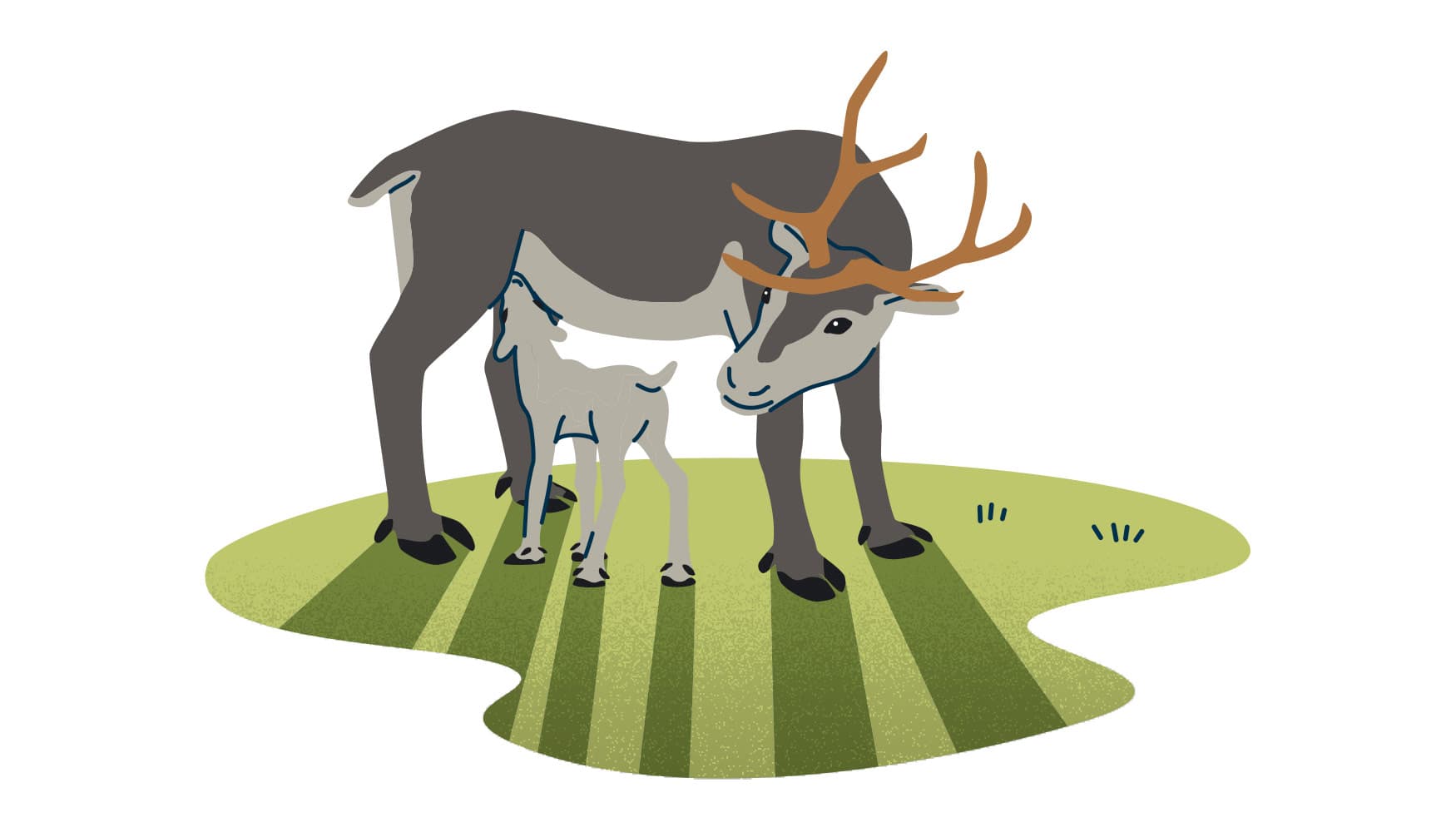
Take Reindeer and Reindeer Husbandry into Consideration – Nature is The Home of Reindeer and Reindeer Herders
The Reindeer Are One Of The Foundations Of The Sámi Culture. Reindeer Husbandry Has A Long History And Still Plays A Major Communal And Cultural Role.
- You can see reindeer near settlements, in forests and on fells.
- You may encounter reindeer herders in their work in the area of their reindeer herding cooperative.
Let The Reindeer Graze In Peace. Do Not Scare The Reindeer.
- Don't approach the reindeer - leave them alone.
- A person trying to approach may cause stress to the reindeer, which may be fatal to pregnant does especially in harsh winter conditions and in spring.
- Do not chase reindeer.
- When walking through reindeer pastures, pass through the gate and close it after you if it was originally closed. If you are not within a reasonable distance of a gate, go under the fence. If you untie any fence ropes, securely tie them again. Do not go over the fence to avoid breaking or lowering the fence.Älä lähesty poroja, vaan anna niiden olla rauhassa.
Let Reindeer Herders Work In Peace
- If you find yourself in the middle of a herd being mustered by a reindeer herder, stay put until the herd has passed.
- If you see a herd of reindeer being transported by reindeer herders approaching you, do not stop but walk away from the herd and its direction of travel.
- Do not go in the middle of round-ups or calf ear-marking without permission. If strangers enter round-up or calf paddocks, it may cause danger to the reindeer, reindeer herders and visitors.
Even Reindeer That Are Kept In Paddocks Near Settlements Are Not There For Tourists
- Reindeer and reindeer paddocks must not be approached without the permission of the reindeer owner.
Don't Disturb The Reindeer When You Photograph Them
- If you want to take photos, shoot from sufficiently afar. If an animal reacts to you, you're too close.
- Drones especially scare reindeer.
**Natural livelihoods are sensitive to disturbances. Something you think is just a small thing may have major impacts on reindeer and the livelihood. Please respect this old and important livelihood that keeps the villages of the north alive. **
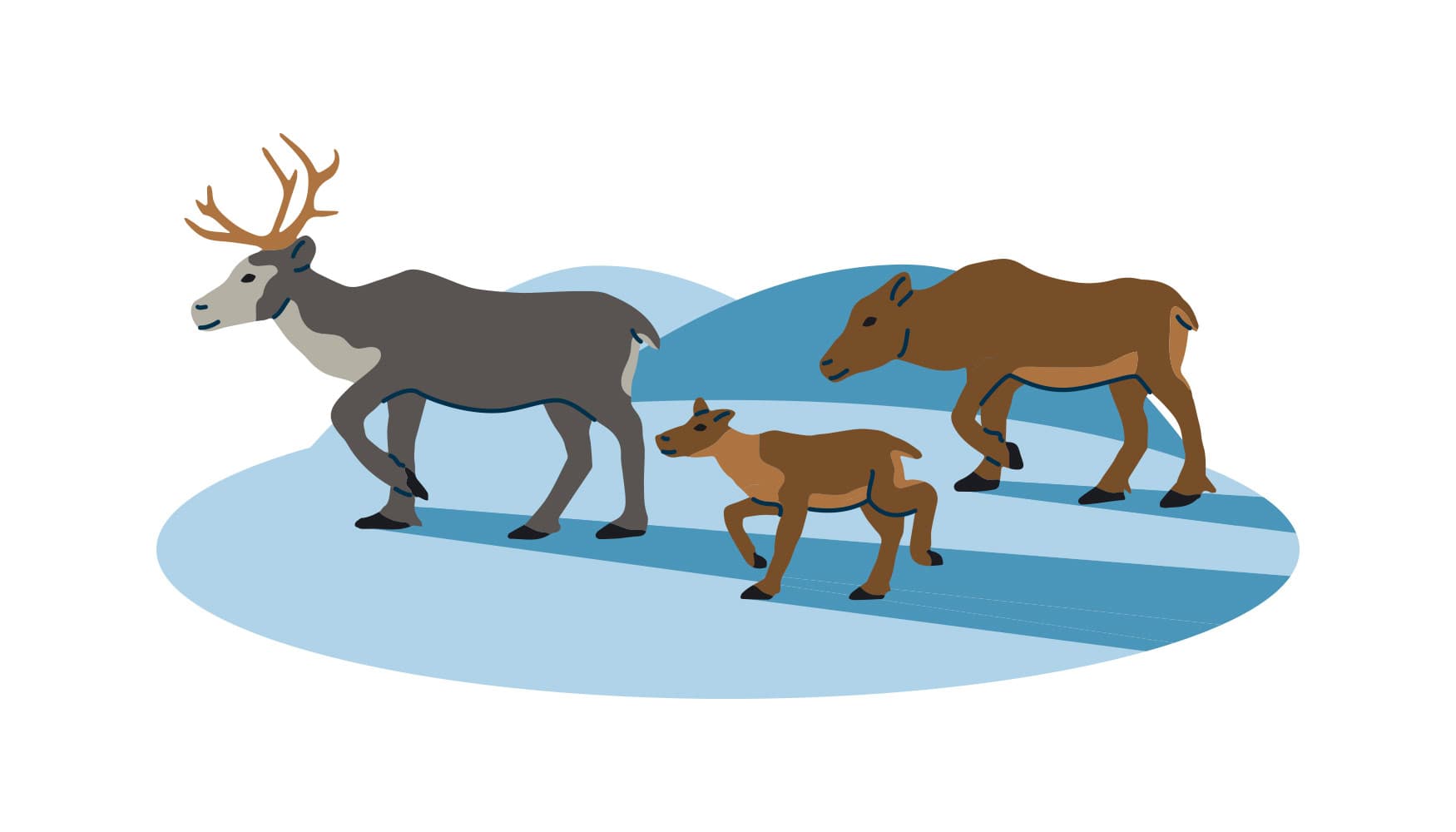
Favour Authentic, Local Services
The Sámi culture includes traditional Sámi industries and their modern forms of practice, including small-scale tourism activities.
Buy Responsible And Ethically Sustainable Local Products And Services
- With the help of a responsible local guide, you can see and experience more and get to know the culture of the region.
Buy Responsible And Ethical Souvenirs And Other Products Made Of Local Raw Materials
The Sámi Duodji brand guarantees the buyer that the product has been made by a Sámi craftsperson. It indicates that the product is made of traditional materials and is based on traditional Sámi culture, crafts and design.in finnish, samiduodji.com), (samitrademarks.com).
Responsibly produced services (reindeer, fishing, nature tourism and souvenirs) and local food and craft culture support the vitality and local culture of the area.
If necessary, utilise car transfer services provided by locals.
Be a responsible communicator! Do not share images or GPS tracks that violate the outdoor etiquette, regional regulations or good practices on social media ( in finnish, samediggi.fi).
Poster of the etiquette metsa.fi
